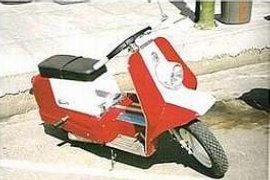HARLEY-DAVIDSON Topper Models/Series Timeline, Specifications & Photos
First production year: 1960
When the Harley-Davidson name crosses your mind, you'd expect to see a long, low cruising machine rolling on a massive rear tire with a pulled-back handlebar and leather saddlebags, followed by a deep rumbling noise. But that's not the case here.
The first and only Harley-Davidson machine that could glide through the streets undetected was the little Topper. The Harley-Davidson Topper was the American manufacturer's first and last engined scooter.
The little Topper scooter's bodywork, such as the front body, front fender, and floorboards, were made of stamped steel, while the engine cover and body were made of molded fiberglass. It had a little storage compartment under the seat, where the manufacturer suggested to be stored extra containers of two-stroke oil.
The Harley-Davidson Topper had a main complaint from its users, such as the Scootaway Drive variable transmission. The road grime would go into the transmission and cause the belt drive to slip. The maker addressed the issue in 1996 with a new sealed transmission and a belt drive operating in a bath of oil.
The Harley-Davidson Topper was powered by a 164cc two-stroke single-cylinder air-cooled engine that delivered nine hp and a top speed of 74 kph (46 mph). The engine was mounted horizontally between the floorboards and was fed by a gasoline/oil mixture.
The ride was handled by a telescopic fork on the front and dual shock absorbers on the rear, while the stopping power was achieved by two expanding drum units both front and rear.
